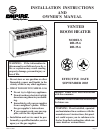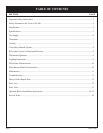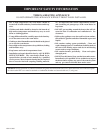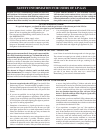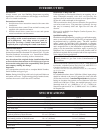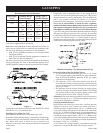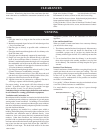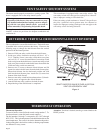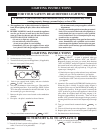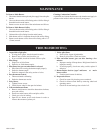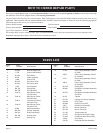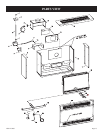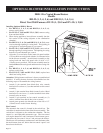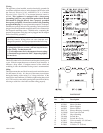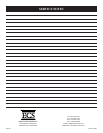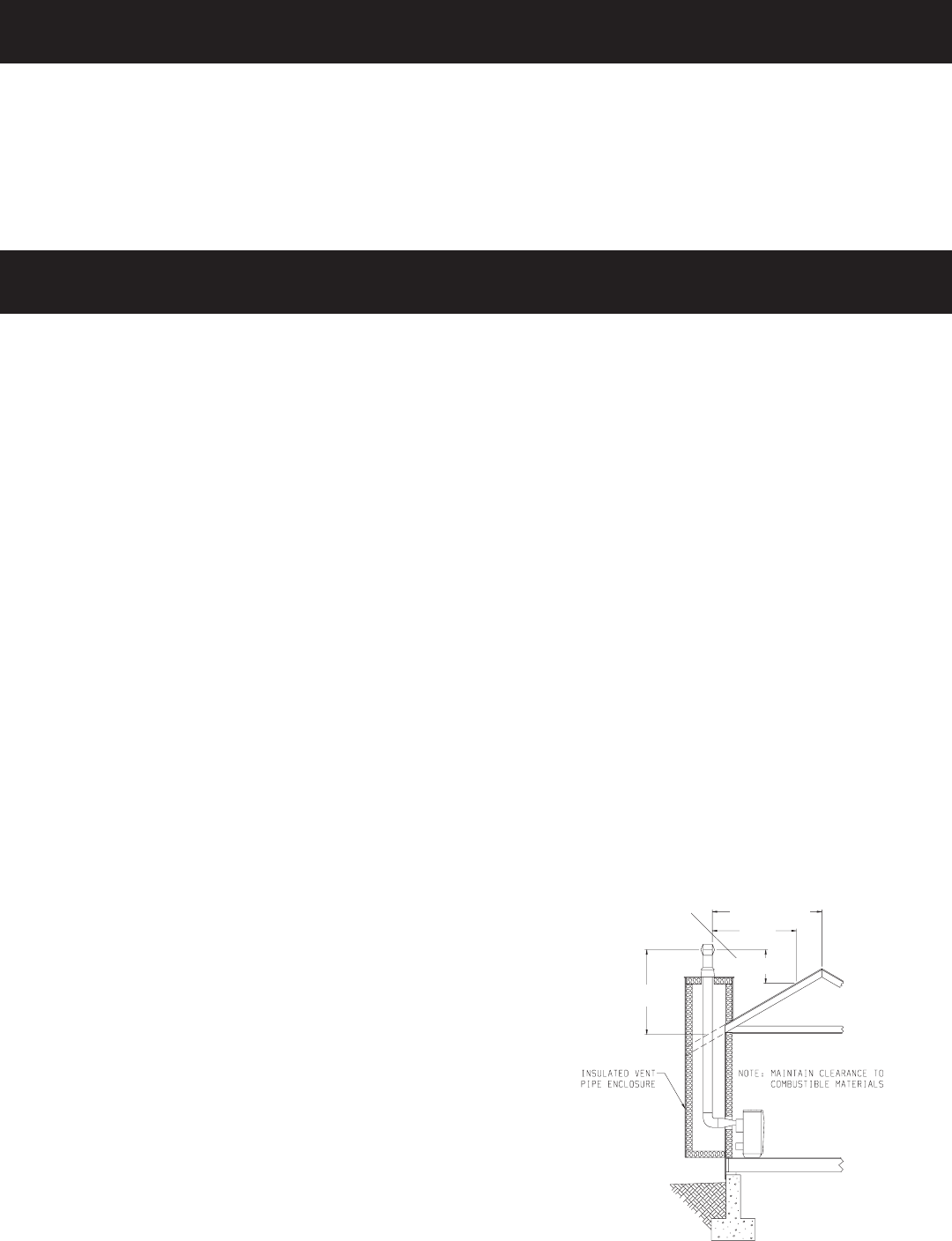
Page 712821-2-0903
CLEARANCES
Clearances: When facing the front of the room heater the mini-
mum clearances to combustible construction (material) are the
following:
Right side 6 inches (152mm). Left side 6 inches (152mm).
Recommend 18 inches (457mm) on left side for servicing.
Do not install in alcove or closet. No horizontal projection above
heater permitted within 48 inches (122cm).
Ceiling 48 inches (122cm). Rear of draft hood 2 inches (51mm).
Open in front to provide service, access, and clearance to combus-
tibles.
VENTING
Venting
1. Flue pipe must be as large as the flue collar on the draft
diverter.
2. Maintain an upward slope of at least 1/4 inch (6mm) per foot
(.3m) of horizontal run.
3. Run flue pipe as directly as possible with a minimum of
elbows.
4. Flue pipe should extend through the wall of a chimney to be
flush with inner wall.
5. Flue pipe must be adequately supported by metal strips.
6. Single wall vent pipe may be attached directly to the draft
hood of the room heater when a clearance of 2 1/2 inches
(64mm) is maintained between the single wall vent pipe and
the combustible wall of the room in which the room heater is
located. Use double wall vent pipe for clearances less than 2
1/2 inches (64mm) to combustibles.
7. For flue pipe running through walls and roof, use B-1 [1 inch
(25mm) clearance to combustibles) vent pipe.
8. Chimneys should extend at least 2 feet (.6m) above the roof
and above any object or nearby building within 10 feet (3m).
9. Open tees should not be used in the flue pipe.
10. Appliance must not be connected to a chimney flue that is
servicing a separate solid-fuel burning appliance.
For proper venting, do not attach a 90° elbow directly to draft
diverter. If possible, attach 2 feet (.6m) of straight vent pipe
before an elbow is used. Use 45° elbows if possible.
Uninsulated single-wall metal pipe shall not be used outdoors
in cold climates for venting gas utilization equipment.
Ventilation and Combustion Air
Room heaters shall be installed in a location in which the facilities
for ventilation permit satisfactory combustion of gas and proper
venting under normal conditions. In buildings of conventional
frame, brick or stone construction without tight storm windows
and doors, infiltration is normally adequate to provide for combus-
tion and draft hood dilution.
Where appliances are installed in a confined space within a
building, the building being of unusually tight construction, air for
combustion and ventilation must be obtained directly from
outdoors or from such spaces that freely communicate with the
outdoors. Under these conditions, the confined space shall be
provided with two permanent openings, one near the top of the
enclosure and one near the bottom; each opening shall have a free
area of not less than one square inch (6.5cm
2
)per 1,000 BTU’s
(.3KW/H) of total input. The draft hood must be in the same
atmospheric pressure zone as the combustion air inlet to the
appliance.
Liner and Insulated Liner
When you install a vented room heater into a masonry chimney
you must follow these steps.
1. The chimney must be lined and sized properly. Most masonry
chimneys are over sized and absorb too much heat to be
considered a proper vent. If you have any doubts line the
chimney with the right size liner. If it’s unlined you must line
it.
2. Use an insulated liner when the chimney is on the outside,
three sides exposed to the weather, and there is no clay liner
in the chimney. The insulation will help keep the flue gases
warmer.
Insulated Vent Enclosure
Vented room heaters installed with the vent going directly to the
outside and above the eaves can cause poor venting. The cold
pipe will have a delay in proper venting and cause the room heater
to shut “off” by the vent safety switch. To prevent delayed
venting as well as condensation of flue products an insulated
enclosure is recommended.
Use type B 4" (102mm) diameter vent pipe and maintain at least
a one inch (25mm) clearance to combustibles.
Use metal thimble to protect vent pipe as it passes through
combustibles.
Figure 3
MORE THAN 10'
(3m)
10' (3m)
2' (.6m)
HEIGHT ABOVE ANY ROOF SURFACE
WITHIN 10' (3m) HORIZONTALLY
3' (.9m)



